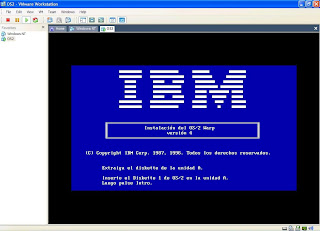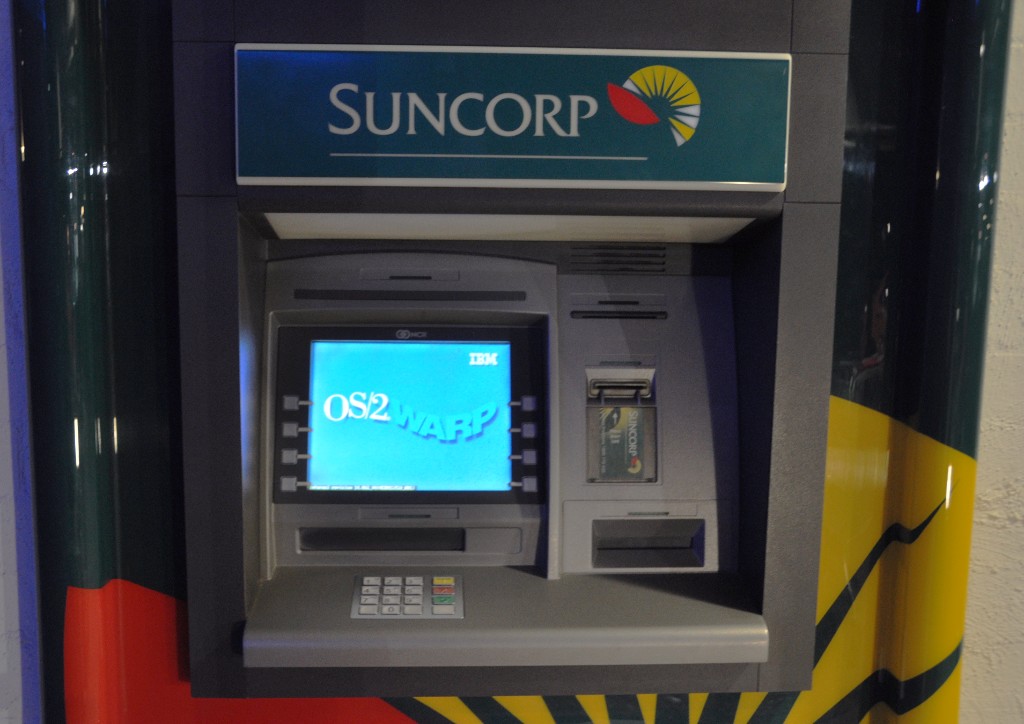OS2 Warp on Linux
Sep 14, 2018 Parallels Desktop for Mac (Intel): Supported OS/2 Versions:. OS/2 warp 4.5. OS/2 warp 4. OS/2 warp 3. eComStation 1.2. eComStation 1.1 Parallels Desktop for Mac & OS/2 notes:. Network driver for OS/2 included on Parallels Tools floppy image – mount the image through Parallels Desktop, under. 9 rows OS/2 Warp 4 OS/2 Warp 4.52 OS/2 Warp 4 incorporated a number of new technologies. If Vmware converter won't install on OS/2, you can get the vCenter Converter that runs off a bootable CD so it doesn't touch the client image whatsoever. However, Vmware charge for this version (and, as usual for VMWare, the 'standalone' version is the installed hotclone plugin, the vCenter module is the one that runs off bootable CD). The OS/2 app is actually a machine tool controller and I can do nothing about that, but I need to check my interfacing to it. I have the Warp4 install media from 1998 (3 CD:s and 3 floppies) and today I tried several times to install it on my WS 6 guest machine. Installing OS/2 Warp 4. Before venturing the actual installation have a look at hobbes if your actual network card is supported. You could also use the eComstation democd to see whether your networking hardware is supported (go to customized boot options and see for the driver). OS/2 Warp 4 desktop after installation In OS/2 2.0, most performance-sensitive subsystems, including the graphics (Gre) and multimedia (MMPM/2) systems, were updated to 32-bit code in a fixpack, and included as part of OS/2 2.1.
I know what most of you may be saying or thinking. “OS/2. Why?” Or maybe something similar. There may be that one reader that is thinking, “All right!” (I doubt it). The reason to do this is that some users may remember the day when they had to work with OS/2. I also like to show the ability of Oracle's VirtualBox as well.
 To run OS/2 on your Linux system, you will need:
To run OS/2 on your Linux system, you will need:
- Oracle's VirtualBox found at https://www.virtualbox.org/wiki/Downloads
- OS/2 Warp version 4.0 (CD version) found at https://winworldpc.com/product/os-2-warp-4/os-2-warp-40
NOTE: There is also a download for OS/2 Warp 4.52 which will also work. I suggest downloading from this site since most other sites provide the boot floppy images as DSK files which do not work well. It is best to use the IMG floppy images.
Download VirtualBox and install it, if you do not have it yet. Download and extract the OS/2 Warp 4.0 CD Version. Once extracted, there should be four files you need:
- Installation.img
- Disk01.img
- Disk02.img
- IBM_OS2_Warp_4.iso
To set up VirtualBox, do the following:
- Create a new Machine
- Enter the name for the Machine as desired
- Set Type to IBM OS/2
- Set Version to OS/2 Warp 4 (or 4.5 if you downloaded the 4.5 version) and click “Next”
- Set your RAM size – 1024 should be fine and click “Next”
- Set the drive option to “Create a virtual hard drive now” the click “Create”
- Make sure VDI is selected and click “Next”
- Select “Dynamically Allocated” and click “Next”
- Specify the file location and set the minimum to 2 GB and click “Create”
NOTE: Some of you may prefer a Fixed Disk image which should be fine, it just takes longer to make.
The machine is now created, but still requires configuration as follows:
- Under System and the Motherboard tab, the Chipset option should be PIIX3
- Change the Boot Order to Floppy, Hard Disk and then CD/DVD
- All three extended feature options should be unchecked. If you have multiple processors, then check “Enable I/O APIC”
- Under the Processor Tab, uncheck “Enable PAE/NX” and set the maximum processors to match your processor count
- Under Display, set the Video Memory to the maximum setting
- The option “Enable 3D Acceleration” should be checked
- Under Storage, the Floppy drive needs to point to the “Installation.img” file
- The CD-ROM needs to point to the “IBM_OS2_Warp_4.iso”
- Under Network, set “Adapter 1” to “Bridged Adapter”
These are all the necessary settings that you should need to get IBM OS/2 going in VirtualBox. Start the Machine and at Figure 1, select “Devices” from the VirtualBox menu and select “Floppy Devices”. Under “Floppy Devices” select “Disk01.img” from where the files were extracted. Click on the Virtual OS screen and press “Enter”. When a similar screen appears asking for Disk 2, change the “Disk01.img” to “Disk02.img” and press “Enter” again to continue the installation.
At the “Welcome” screen as shown in Figure 2, press “Enter”.
FIGURE 2
The next screen, Figure 3, is where you start the installation by selecting an install method. The Easy method is fine to use, so press “Enter”. The next screen asks to reinsert the installation floppy in the drive, so change the Floppy Device to “Installation.img” and then press “Enter”.
The Virtual OS should reboot and ask you to remove the Installation disk and replace it with Disk 1. To do this, open “Floppy Devices” and select “Disk01.img” before pressing “Enter”. The same will happen again with Disk 2. At the Welcome screen, press “Enter” again. Now, you should see a screen similar to Figure 3 which shows the OS/2 installation starting to copy files to the hard drive.
FIGURE 3
After the files copy, you should see a screen like Figure 4. Now, you need to click “Devices” and “Floppy Devices” and then select “Remove Disk from Virtual Drive” and press “Enter” to continue.
FIGURE 4
The virtual system should reboot and load OS/2 Warp. If you get any issues here, make sure the boot order is Floppy, Hard disk and then CD/DVD.
Figure 5 shows a System Configuration screen which you can set the items appropriately.

FIGURE 5

 Click “Next” to set up more system settings. After clicking “Next” again, you are prompted to select a printer. Simply click “OK” to not install a default printer.
Click “Next” to set up more system settings. After clicking “Next” again, you are prompted to select a printer. Simply click “OK” to not install a default printer.The next screen, Figure 6, prompts you to set up Networking Services. If you have a network adapter and you are on the Internet, click the top option “Access the Internet” and click “Next”.
FIGURE 6
The next screen shows the detected network adapter, click “Next”. The next screen asks about the network adapter configuration. Select “No” and then “Next”. The next screen has the TCP/IP Services highlighted so click “Install”. Another installation process should start. Once it finishes, it will prompt you that it will restart the system. After a few seconds, the Virtual OS will restart and reload to continue the installation. After nearly a minute on the OS2 text screen, the Warp title screen should appear. The installation process should continue again and will once again restart the Virtual OS. After it starts up, the main GUI screen should appear with a screen for a Tutorial. The main GUI is shown in Figure 7.
FIGURE 7
Os 2 Warp 4 Vmware
At this point, OS/2 Warp version 4 is installed and running. Searching the Internet you should be able to find applications and games to run under OS/2.